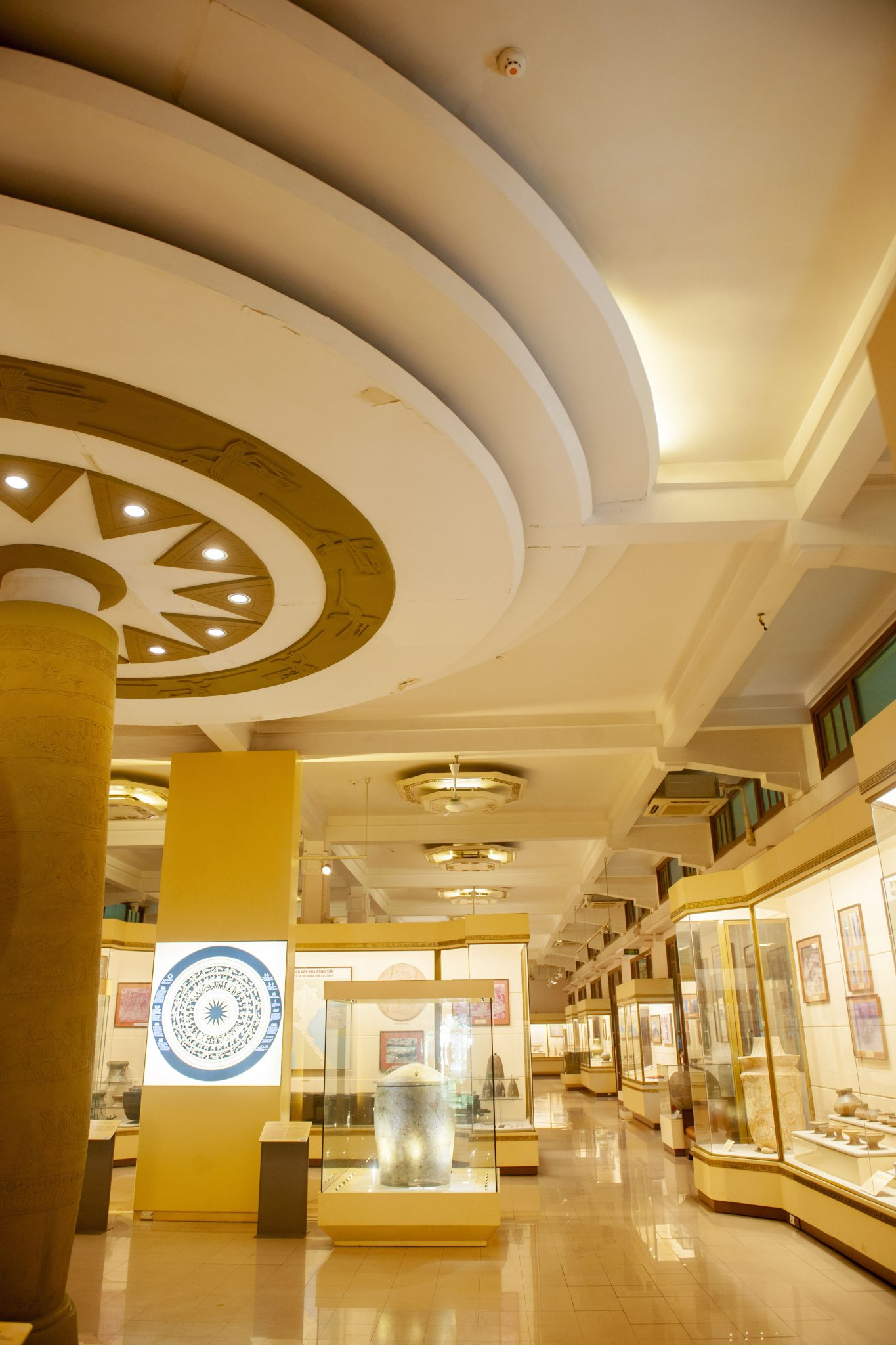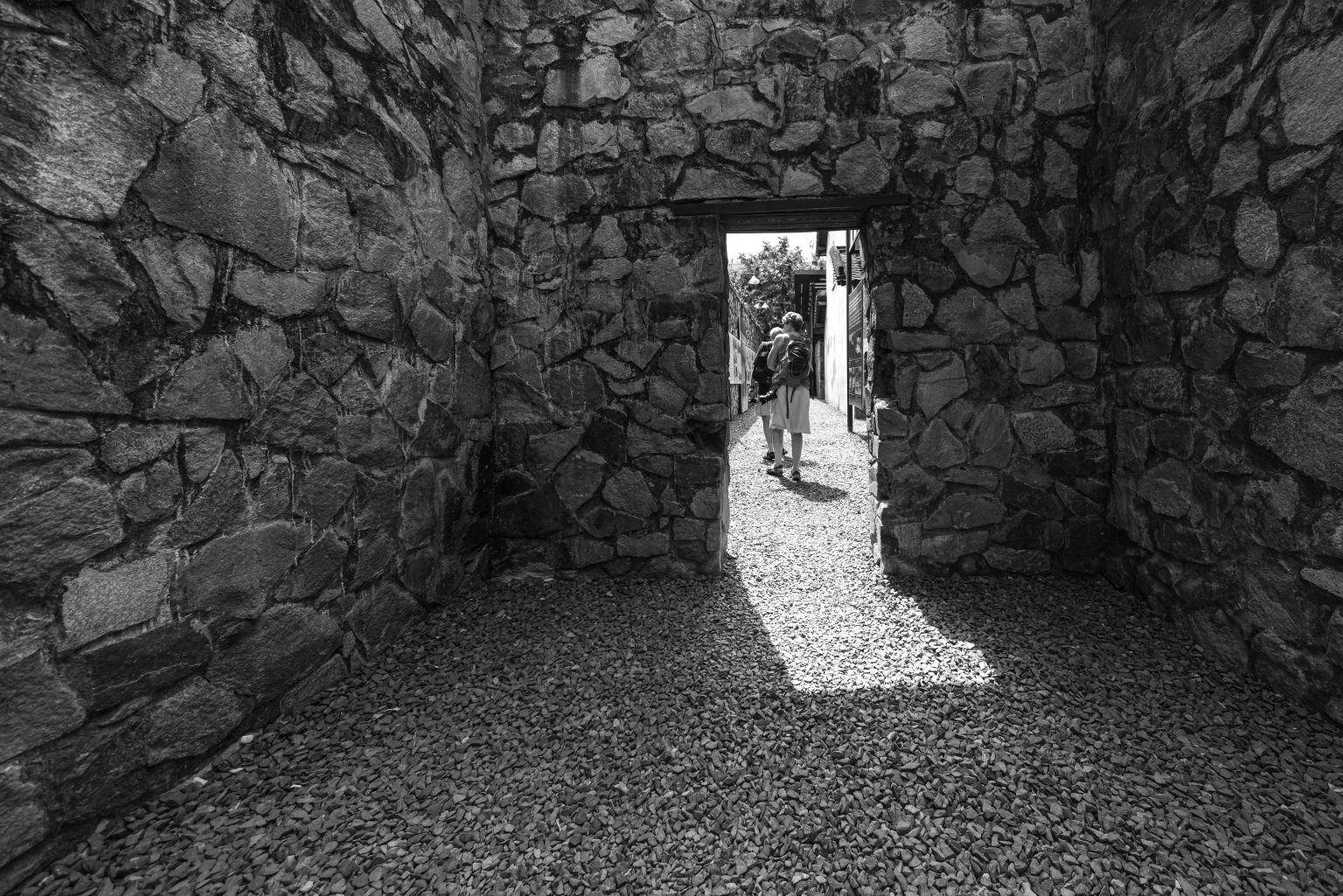
Top Museums in Vietnam
It is no accident that museums are the top attraction for visitors from all over the world to Vietnam. They can learn everything there is to know about the history of the nation and its inhabitants. Numerous rare antiques that no historical work possesses are kept in the museum.
 The National Museum of History is deserving of the title of No. 1 museum because it is the most intricately furnished with more than 200,000 artifacts and priceless records of historical periods, ranging from the Paleolithic to the footsteps of primitive people who carved stones to make axes, making a fire in caves, and then going through the period of knowing how to make copper drums, iron tools, through the period of the powerful dynasties Dinh, Ly, Tran, Le, and Nguyen. The most outstanding exhibit at this museum is its most exquisite and characteristic collection of objects, many of which are designated as National Treasures, including the Dong Son drum collection, the porcelain collection with brown enamel, the paraphernalia, and treasures from the Hue court.
The National Museum of History is deserving of the title of No. 1 museum because it is the most intricately furnished with more than 200,000 artifacts and priceless records of historical periods, ranging from the Paleolithic to the footsteps of primitive people who carved stones to make axes, making a fire in caves, and then going through the period of knowing how to make copper drums, iron tools, through the period of the powerful dynasties Dinh, Ly, Tran, Le, and Nguyen. The most outstanding exhibit at this museum is its most exquisite and characteristic collection of objects, many of which are designated as National Treasures, including the Dong Son drum collection, the porcelain collection with brown enamel, the paraphernalia, and treasures from the Hue court.
 Another stunning piece of architecture with French and Eastern influences is the National History Museum. The Louis Finot Museum, also known as the Museum of the Old Far East School, left behind the institution that is today the museum (built-in 1926). This has always been a venue to gather and exhibit a variety of antiques from around Vietnam and Southeast Asia. Perhaps due to its early birth, this location has amassed numerous priceless and rare items. The methodically chronologically organized history spanning tens of thousands of years seems to draw viewers in. Additionally, this museum contains a hall for its own special collection of Champa stone sculptures as well as an outdoor area for displaying lovely and spacious headstones and stone statues.
Another stunning piece of architecture with French and Eastern influences is the National History Museum. The Louis Finot Museum, also known as the Museum of the Old Far East School, left behind the institution that is today the museum (built-in 1926). This has always been a venue to gather and exhibit a variety of antiques from around Vietnam and Southeast Asia. Perhaps due to its early birth, this location has amassed numerous priceless and rare items. The methodically chronologically organized history spanning tens of thousands of years seems to draw viewers in. Additionally, this museum contains a hall for its own special collection of Champa stone sculptures as well as an outdoor area for displaying lovely and spacious headstones and stone statues.
 Nearly 200 public and private museums exist in our nation in addition to the National Museum of History. These museums are making an effort to change with the times. Overcoming all obstacles has been necessary to reinvent oneself. Among them are museums, which design tourist attractions. According to some standards, they can be ranked as some of the most popular museums in the nation. Three museums in Vietnam, notably the Museum of Ethnology and the Museum of War Remnants, have received high rankings on TripAdvisor, the largest travel website in the world based in Needham, Massachusetts, in the United States.
Nearly 200 public and private museums exist in our nation in addition to the National Museum of History. These museums are making an effort to change with the times. Overcoming all obstacles has been necessary to reinvent oneself. Among them are museums, which design tourist attractions. According to some standards, they can be ranked as some of the most popular museums in the nation. Three museums in Vietnam, notably the Museum of Ethnology and the Museum of War Remnants, have received high rankings on TripAdvisor, the largest travel website in the world based in Needham, Massachusetts, in the United States.
 The Ethnographic Museum often ranks among Asia's most appealing museums, welcoming an average of more than 500,000 visitors. The museum comprises a collection of 42,000 film materials, 15,000 artifacts, and many other things. Foreign tourists are interested in learning about the unique picture of Vietnam's 54 ethnic groups. Additionally, there are outdoor exhibits of dwellings from the Ba Na, De, and H Mong ethnic groups, Gia Rai people tombs, Co Tu, rice-pounding mortars powered by water from the Dao ethnic group, water puppet shows, singing, and gong-beating. The Museum of Ethnology's appeal may lay in satisfying visitors' interest in the varied religious practices of the 54 ethnic groups that coexist with one another while maintaining their own identities to become the present Vietnamese people.
The Ethnographic Museum often ranks among Asia's most appealing museums, welcoming an average of more than 500,000 visitors. The museum comprises a collection of 42,000 film materials, 15,000 artifacts, and many other things. Foreign tourists are interested in learning about the unique picture of Vietnam's 54 ethnic groups. Additionally, there are outdoor exhibits of dwellings from the Ba Na, De, and H Mong ethnic groups, Gia Rai people tombs, Co Tu, rice-pounding mortars powered by water from the Dao ethnic group, water puppet shows, singing, and gong-beating. The Museum of Ethnology's appeal may lay in satisfying visitors' interest in the varied religious practices of the 54 ethnic groups that coexist with one another while maintaining their own identities to become the present Vietnamese people.
 There are many Western tourists to the War Remnants Museum. Many veterans are among the attendees. They search for recollections, unanswered wartime questions, and perhaps the ultimate surprise of a people who were defeated by brutal force. Vietnam has developed into a tranquil and friendly nation. Even though the conflict has officially ended, future generations still want to know more. As one of the most alluring museums in Asia for many years, the museum's attraction has been reflected in the number of visitors.
There are many Western tourists to the War Remnants Museum. Many veterans are among the attendees. They search for recollections, unanswered wartime questions, and perhaps the ultimate surprise of a people who were defeated by brutal force. Vietnam has developed into a tranquil and friendly nation. Even though the conflict has officially ended, future generations still want to know more. As one of the most alluring museums in Asia for many years, the museum's attraction has been reflected in the number of visitors.
 Every time people visit the hue royal palace, they are drawn to the Hue Imperial Antiquities Museum. It was then that the Nguyen dynasty, led by King Thieu Tri, soon purposefully devoted Long An Palace as a location to retain the riches of dynasties from more than a century before. Empresses, bureaucrats, soldiers, the distinctive "Pháp lam" porcelain that the Nguyen dynasty ordered and had manufactured in renowned porcelain kilns in China and Europe, the acquisition of antiquated coins, the acquisition of cannons...
Every time people visit the hue royal palace, they are drawn to the Hue Imperial Antiquities Museum. It was then that the Nguyen dynasty, led by King Thieu Tri, soon purposefully devoted Long An Palace as a location to retain the riches of dynasties from more than a century before. Empresses, bureaucrats, soldiers, the distinctive "Pháp lam" porcelain that the Nguyen dynasty ordered and had manufactured in renowned porcelain kilns in China and Europe, the acquisition of antiquated coins, the acquisition of cannons...
 Due to its modern building and exhibition design, the Quang Ninh Museum, a provincial museum that is situated directly on the shore of the renowned Ha Long Bay, is a bustling destination. In contrast to the sky and the ocean's vivid blue color, the museum looks like a black pearl. The museum was constructed by the Spanish architect Salvador Perez Arroyo around the concept of placing massive coal, a mine product, right next to a famous bay, which helps draw visitors here. As a result, among our nation's provincial museums, Quang Ninh Museum receives the most visits.
Due to its modern building and exhibition design, the Quang Ninh Museum, a provincial museum that is situated directly on the shore of the renowned Ha Long Bay, is a bustling destination. In contrast to the sky and the ocean's vivid blue color, the museum looks like a black pearl. The museum was constructed by the Spanish architect Salvador Perez Arroyo around the concept of placing massive coal, a mine product, right next to a famous bay, which helps draw visitors here. As a result, among our nation's provincial museums, Quang Ninh Museum receives the most visits.
 The aforementioned top museums have embraced the trend of fusing the globe with attractions, originally utilizing various advances in science, technology, and contemporary art to enhance the exhibit and draw in a sizable number of visitors.
The aforementioned top museums have embraced the trend of fusing the globe with attractions, originally utilizing various advances in science, technology, and contemporary art to enhance the exhibit and draw in a sizable number of visitors.
Source: Prof. Trinh Sinh, Phu Duc, Hoang Hai, Ba Ngoc, Jet Huynh